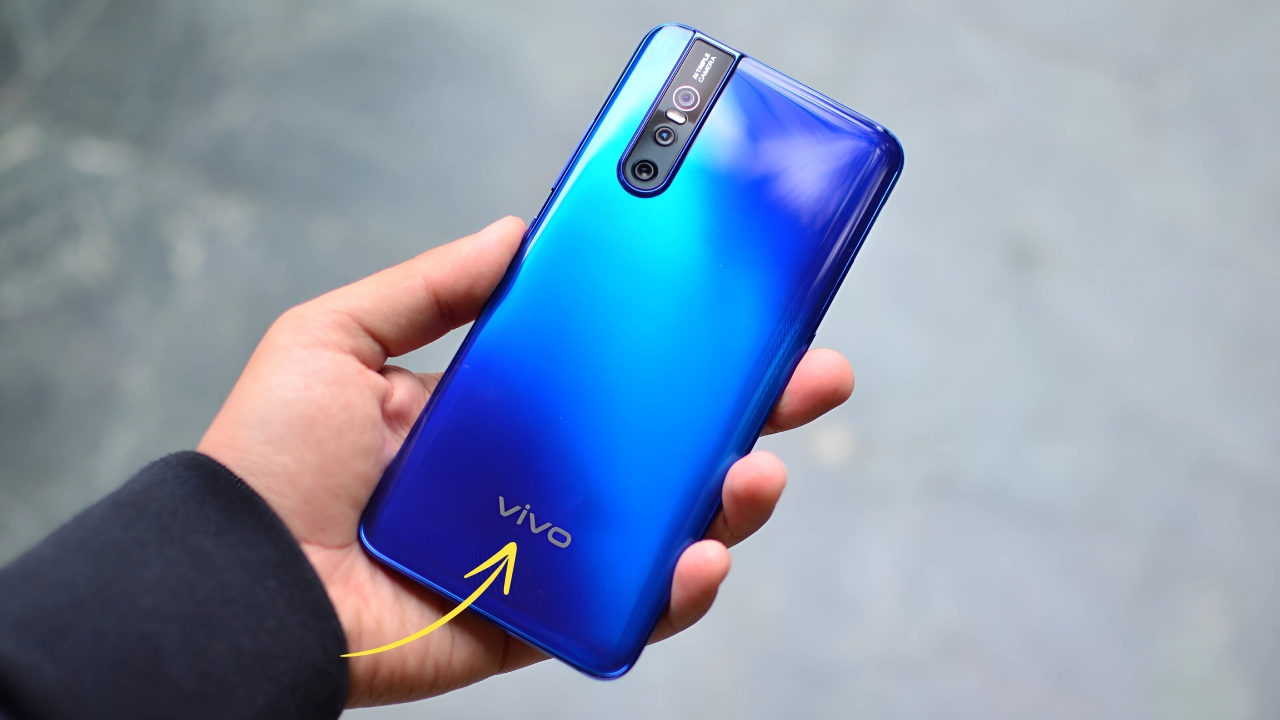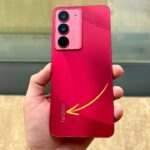Vivo V15 Pro: In the rapidly evolving landscape of smartphone design, the Vivo V15 Pro emerged as a significant milestone that helped redefine the approach to front camera implementation and screen-to-body ratios.
Released when manufacturers were experimenting with various solutions to maximize display area while accommodating front-facing cameras, the V15 Pro’s pop-up camera mechanism represented one of the most elegant solutions of its era.
This innovative approach allowed Vivo to deliver an immersive, notch-free display experience while maintaining high-quality selfie capabilities—a combination that resonated with consumers seeking both form and function.
Vivo V15 Pro: Design Philosophy and Display Excellence
The V15 Pro embodied Vivo’s design ethos of prioritizing screen real estate through innovative engineering solutions.
The device featured a 6.39-inch Super AMOLED display with a resolution of 2340 x 1080 pixels (403 ppi), delivering vibrant colors, deep blacks, and excellent contrast ratios characteristic of OLED technology.
With minimal bezels and the absence of any notch or punch-hole, the screen achieved an impressive 91.64% screen-to-body ratio—a remarkable figure for its time that contributed to an immersive viewing experience for media consumption and gaming.
The curved rear panel incorporated a gradient finish available in Topaz Blue and Ruby Red colorways, creating a distinctive visual identity that shifted appearance depending on viewing angle and lighting conditions.
This attention to aesthetic detail extended to the triple camera arrangement, which featured a vertically aligned housing that maintained design coherence with the overall device language.
Despite housing a motorized camera mechanism, the V15 Pro maintained reasonable dimensions at 157.3 x 74.7 x 8.2mm and a weight of approximately 185 grams.
The frame incorporated a dedicated Google Assistant button on the left edge—reflecting the growing importance of voice assistants in smartphone interaction—while maintaining the standard power and volume controls on the right side for familiar usability.
The Revolutionary Pop-up Camera
The defining feature of the V15 Pro was undoubtedly its motorized elevating front camera—a 32MP f/2.0 unit that remained hidden within the phone’s body during normal use and emerged only when selfie mode was activated.
This mechanical solution eliminated the need for display notches or punch-holes, preserving the visual integrity of the screen while still providing high-resolution self-photography capabilities.
The elevating mechanism was engineered for both speed and durability, with Vivo claiming reliability for over 300,000 activation cycles—sufficient for several years of typical usage.
The system incorporated fall detection that automatically retracted the camera when the device sensed it was dropped, providing protection against mechanical damage during accidents.
Beyond the novelty factor, the 32MP sensor represented a significant upgrade over typical front cameras of the era, utilizing pixel-binning technology to enhance light sensitivity in challenging conditions.
This technical approach allowed the V15 Pro to deliver excellent selfie quality across various lighting scenarios, reinforcing Vivo’s reputation for prioritizing camera capabilities in their product development.
Rear Camera Versatility
The photography capabilities extended beyond the innovative front camera to include a versatile triple-camera system on the rear.
The primary 48MP Sony IMX586 sensor with an f/1.8 aperture employed quad-pixel binning to produce 12MP images with enhanced dynamic range and reduced noise—a common approach that balanced resolution with practical image quality considerations.
This main shooter was complemented by an 8MP ultra-wide lens with a 120-degree field of view and a 5MP depth sensor for portrait mode effects.
This combination provided creative flexibility across various shooting scenarios, from landscape photography to portrait captures with natural background blur.
Vivo’s camera software enhanced these hardware components with AI-driven scene recognition that optimized settings based on detected subjects, various portrait lighting effects, and a comprehensive Pro mode that provided manual control over shooting parameters for more experienced photographers.
Performance and Software
Under the hood, the V15 Pro was powered by the then-new Qualcomm Snapdragon 675 processor—an 11nm chipset featuring an octa-core configuration with two performance-oriented Kryo 460 Gold cores running at 2.0GHz and six efficiency-focused Kryo 460 Silver cores at 1.7GHz.
This mid-range SoC delivered balanced performance across various tasks while maintaining reasonable power efficiency.
The processor was paired with 6GB or 8GB of RAM and 128GB of internal storage, expandable via microSD—specifications that provided comfortable headroom for multitasking and app installation during the device’s expected lifecycle.
The gaming experience benefited from the Adreno 612 GPU, which handled popular titles of the era with adequate frame rates at medium to high graphics settings.
On the software front, the V15 Pro ran Vivo’s Funtouch OS 9 based on Android 9 Pie, offering a feature-rich interface with extensive customization options.
The software incorporated gaming-focused features like Game Mode for optimized performance and notification management during gaming sessions, reflecting the growing importance of mobile gaming in the smartphone market.
Biometric Innovation
Beyond the camera system, the V15 Pro showcased Vivo’s commitment to biometric authentication innovation through its in-display fingerprint scanner—technology that was still relatively new to the mainstream market at the time.
The fifth-generation optical sensor offered improved recognition speed and reliability compared to earlier implementations, providing convenient unlocking without requiring a dedicated physical sensor that would compromise design aesthetics.
This under-display solution was complemented by face recognition utilizing the pop-up front camera, offering alternative authentication options depending on user preference and situational convenience.
The combination of these biometric approaches demonstrated Vivo’s understanding of the importance of seamless device access in the overall user experience.
Battery Life and Charging
Power management was addressed through a 3,700mAh battery that provided adequate endurance for typical daily usage patterns of the era.
While not class-leading in capacity, the efficient processor and AMOLED display contributed to reasonable battery life that could comfortably last through a day of moderate use.
When recharging became necessary, the included Dual-Engine Fast Charging technology (Vivo’s implementation of 18W fast charging) replenished the battery at a reasonable pace, though not matching the rapid charging capabilities that would become standard in subsequent years.
The microUSB port represented one of the few areas where the V15 Pro showed its age, as the industry was transitioning toward USB-C connectivity at the time of its release.
Legacy and Industry Impact
The Vivo V15 Pro represented a significant chapter in smartphone design evolution, demonstrating the viability of mechanical camera solutions as an approach to maximizing screen real estate.
While pop-up cameras would eventually give way to under-display technology and more sophisticated punch-hole implementations, the V15 Pro’s bold engineering choice influenced industry thinking about the possibilities for front camera placement.
The device established Vivo as an innovation leader willing to explore mechanical solutions in an industry increasingly focused on solid-state designs.
This reputation for creative engineering would continue to define Vivo’s approach to product development in subsequent years, with the company regularly introducing novel features that challenge conventional smartphone design thinking.
Vivo V15 Pro:
The Vivo V15 Pro embodied a moment in smartphone evolution when manufacturers were actively experimenting with various approaches to balancing screen size, camera capabilities, and overall design aesthetics.
Its pop-up camera mechanism represented one of the most creative solutions to the “notch problem” that dominated smartphone design discussions of that era.
While technology has inevitably progressed since its release, the V15 Pro remains a noteworthy device that demonstrated the potential of mechanical engineering to solve design challenges in mobile devices.
Its influence extended beyond Vivo’s own product lineup to impact broader industry thinking about the possibilities for camera placement and screen maximization—a legacy that continues to resonate in contemporary smartphone design philosophy.










